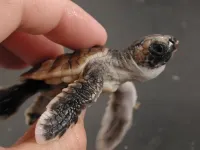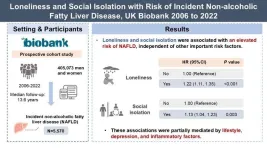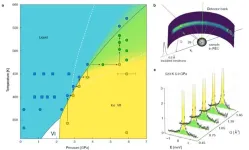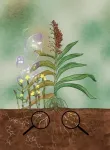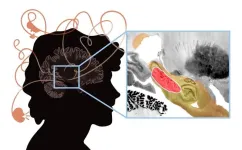(Press-News.org)
A new study from researchers at the University of North Carolina at Chapel Hill provides the first empirical evidence that loggerhead sea turtles can learn and remember the unique magnetic signatures of different geographic regions. This discovery offers new insights into how turtles and other migratory animals navigate vast distances to reach specific foraging and breeding grounds. The findings, published in the journal Nature, also suggest that sea turtles possess two distinct magnetic senses that function differently to detect the Earth’s magnetic field.
Loggerhead turtles are famous for their extraordinary migrations, guided by an internal magnetic map that enables them to determine their location by detecting variations in Earth’s magnetic field. Until now, scientists had speculated that turtles might also have the ability to learn and recognize magnetic fields associated with important locations, but no empirical evidence had confirmed this ability—until now.
“Our study investigated for the first time whether a migratory animal can learn to recognize the magnetic signatures of different geographic areas,” said Kayla Goforth, first author of the study. “Researchers have speculated for decades that animals can learn magnetic signatures, but this is the first empirical demonstration of that ability, so it fills in an important gap in our knowledge.”
Through controlled experiments, the research team demonstrated that loggerhead turtles can indeed learn and remember the magnetic fields of areas where they receive food. This ability suggests that turtles use learned magnetic information to navigate back to foraging areas, helping explain their remarkable navigational accuracy over long distances. More broadly, these findings could apply to a wide range of migratory animals that rely on magnetic cues for navigation.
“The ability to distinguish among magnetic fields of different geographic areas likely explains how many animals – not just sea turtles – can navigate long distances to specific locations,” said Ken Lohmann, a professor of biology at UNC-Chapel Hill.
The research also delves into the underlying mechanisms of magnetic sensing. The results indicate that turtles’ magnetic map sense and magnetic compass sense rely on different ways of detecting magnetic fields, suggesting the presence of two distinct magnetic senses in these animals. This discovery provides a major advancement in the broader scientific understanding of how animals perceive and use the Earth’s magnetic field.
In addition to its implications for science, the study holds promise for conservation efforts and human technological advancements. Understanding how turtles detect and interpret magnetic fields could help conservationists mitigate disruptions caused by human-made structures, such as power lines and offshore wind farms, which can interfere with natural magnetic cues. Additionally, insights from this research may contribute to the development of novel navigation technologies inspired by nature.
“We’ve known for 20 years that sea turtles have magnetic maps and now, by showing that they can learn new locations, we have learned how the maps might be built and modified,” said Catherine Lohmann, a biology professor at UNC-Chapel Hill. “It is amazing that sea turtles have access to a wealth of invisible information that they use to navigate in ways that are hard for us to even imagine.”
The study’s interdisciplinary nature highlights the importance of collaboration across scientific fields. Notably, the specialized antenna system built for this research closely resembles technology used for separate research, demonstrating the broad applications of electromagnetic principles.
“Remarkably, the antenna system we built for the turtle study is nearly identical to that of an unrelated dark matter search we had worked on,” said Reyco Henning, a professor in UNC-Chapel Hill’s Department of Physics and Astronomy. “It’s a great example of the broad application of the laws of electromagnetism.”
The researchers plan to further explore the extent of turtles’ learning capabilities, their sensitivity to magnetic fields, and how they integrate learned information into real-world navigation. The findings open the door to exciting new research avenues and reinforce the vital role of interdisciplinary collaboration in advancing scientific knowledge.
The study is available online in the journal Nature at: https://www.nature.com/articles/s41586-024-08554-y
END
ROCHESTER, Minn. — Heart surgery is a serious and invasive medical procedure, and that can be intimidating for a patient. A new study published in Mayo Clinic Proceedings suggests that virtual reality (VR) can be an effective tool to reduce preoperative anxiety in older patients undergoing their first open-heart surgery. While much of the research to date using VR involved younger patient populations, these research findings suggest that immersive VR was effective and well tolerated in older ...
The financial and emotional toll borne by mothers whose adult children have experienced incarceration is often overlooked but can exacerbate financial burdens, especially for Black mothers, according to new research from Rice University sociologist Brielle Bryan.
The study, “Maternal Wealth Implications of Child Incarceration: Examining the Upstream Consequences of Children’s Incarceration for Women’s Assets, Homeownership and Home Equity,” appears in a recent edition of Demography and explores the wealth disparities and racial inequities that intensify these burdens.
The research focuses ...
Under embargo until 12/02/25 12:00PM EST/17:00PM GMT
It’s been a long-held belief that absolute pitch - the ability to identify musical notes without reference - is a rare gift reserved for a select few with special genetic gifts or those who began musical training in early childhood. However, new research from the University of Surrey challenges this, demonstrating that adults can acquire this skill through rigorous training.
The study involved a diverse group of 12 adult musicians, with varying levels of musical experiences, who participated in an eight-week online training program. ...
Loneliness and social isolation have been linked to an elevated risk of non-alcoholic fatty liver disease (NAFLD), according to a groundbreaking study conducted by researchers from Central South University and the Army Medical University in China, in collaboration with the Karolinska Institutet in Sweden. Published in Health Data Science, the study analyzed data from over 400,000 participants in the UK Biobank, shedding light on the far-reaching impacts of social factors on liver health.
The research team, led by Professor Jiaqi Huang and Professor Jin Chai, sought to explore whether loneliness and social isolation—two ...
In everyday life, we typically encounter water in one of three familiar states – solid, liquid or gas. But there are in fact many more phases, some of which – predicted to exist at high temperature and pressure – are so strange they’re referred to as exotic. State-of-the-art neutron spectrometers and sample environment infrastructures at the Institut Laue-Langevin (ILL) have enabled the first experimental observation of one of these exotic phases – plastic ice VII.
Plastic ice VII was originally predicted more than 15 years ago by molecular dynamics ...
Scientists have discovered an interaction between genes that increases the risk of developing a type of alopecia.
In a new JAMA Dermatology study, scientists at King’s College London found that changes in two parts of the genome work together to influence alopecia risk.
Frontal fibrosing alopecia (FFA) is a highly distressing dermatological disorder which is associated with inflammation, scarring and irreversible hair loss. The disease affects an increasing number of patients worldwide and is caused by genetic and environmental factors.
The study authors conducted a meta-analysis of four cohorts ...
Chinese scientists have identified two key genes responsible for sorghum's resistance to Striga, a parasitic plant that causes significant crop losses. The breakthrough, which also highlights the potential of AI to predict key amino acid sites in strigolactone (SL) transporters, could have wide-ranging applications in enhancing parasitic plant resistance across various crops.
This study, published in Cell, was conducted by Prof. XIE Qi's team at the Institute of Genetics and Developmental ...
Francis Crick Institute press release
Under strict embargo: 16:00hrs GMT Wednesday 12 February 2025
Peer reviewed
Experimental study
Animals, people and cells
Researchers from the Francis Crick Institute have found that some particularly aggressive lung cancer cells can develop their own electric network, like that seen in the body’s nervous system.
This unique property could make them less dependent on the environment surrounding the tumour and even spread more easily.
Small cell lung cancer (SCLC) is one of the hardest types of cancer to ...
The RNA inhibitor olpasiran significantly reduces a type of “bad cholesterol” that’s associated with a high risk of cardiovascular events, according to results from an analysis by a Mount Sinai researcher of a phase 2 trial. The study reported that higher doses of olpasiran lowered the type of cholesterol called lipoprotein(a) [Lp(a)] by more than 95 percent in participants with atherosclerotic cardiovascular disease. Findings were published February 12, 2025, in JAMA Cardiology.
“Our study is the first clinical trial to investigate the association between oxidized phospholipids on lipoprotein(a) and inflammatory mediators,” says ...
Andrew Pines, MD, MA, a resident in the Department of Psychiatry at Brigham and Women’s Hospital and a researcher in the Center for Brain Circuit Therapeutics, is the lead author of a paper published in JAMA Psychiatry, Mapping Lesions That Cause Psychosis to a Human Brain Circuit and Proposed Stimulation Target.
Shan Siddiqi, MD, Assistant Professor of Psychiatry at Harvard Medical School and Director of Psychiatric Neuromodulation Research at the BWH Center for Brain Circuit Therapeutics, is the senior author of this ...
